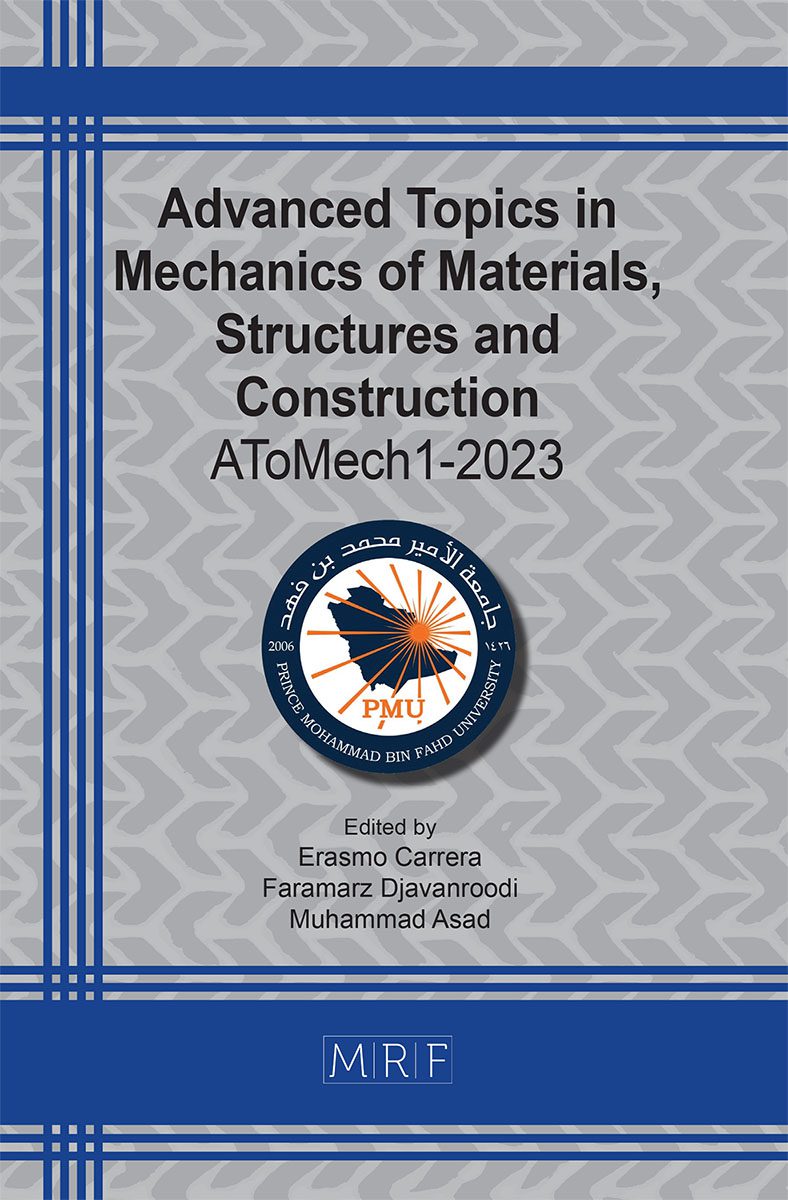Effect of shearing conditions and initial aggregates’ state on the mechanical behavior of cellular glass foam
Layal Jradi, Bassel Seif El Dine, Tahar Ayadat, Saidur Schowdhury, Andi Asiz
download PDFAbstract. Cellular glass aggregates made from recycled glass are increasingly being used in civil engineering and infrastructure applications. This contemporary material is relatively new in civil engineering applications. This paper investigates the effect of shearing conditions and initial aggregates’ state on the mechanical properties of cellular glass foam. A series of monotonic large-scale triaxial tests (300 mm diameter and 600 mm height) was performed in order to investigate the influence of initial dry density, initial aggregates’ state (i.e. flawless, weathered, and compacted), and consolidation stresses on the mechanical behavior of cellular glass foam. The material’s behaviour observed under monotonic shear is of contracting type, with significant evolution of the material during shear (grain crushing) and a strongly strain-hardening character. The failure criterion of the studied material is similar to the failure criterion used for granular soils for which a shearing resistance angle and apparent cohesion is perceived.
Keywords
Cellular Glass Aggregates, Triaxial Testing, Monotonic Shear, Dry Density, Mechanical Properties
Published online 8/10/2023, 10 pages
Copyright © 2023 by the author(s)
Published under license by Materials Research Forum LLC., Millersville PA, USA
Citation: Layal Jradi, Bassel Seif El Dine, Tahar Ayadat, Saidur Schowdhury, Andi Asiz, Effect of shearing conditions and initial aggregates’ state on the mechanical behavior of cellular glass foam, Materials Research Proceedings, Vol. 31, pp 66-75, 2023
DOI: https://doi.org/10.21741/9781644902592-8
The article was published as article 8 of the book Advanced Topics in Mechanics of Materials, Structures and Construction
![]() Content from this work may be used under the terms of the Creative Commons Attribution 3.0 license. Any further distribution of this work must maintain attribution to the author(s) and the title of the work, journal citation and DOI.
Content from this work may be used under the terms of the Creative Commons Attribution 3.0 license. Any further distribution of this work must maintain attribution to the author(s) and the title of the work, journal citation and DOI.
References
[1] Disfani, M.M., Arulrajah, A., Haghighi, H., Mohammadinia, A., Horpibulsuk, S., 2014. Flexural beam fatigue strength evaluation of crushed brick as a supplementary material in cement stabilized recycled concrete aggregates. Constr. Build. Mater. 68, 667-676. https://doi.org/10.1016/j.conbuildmat.2014.07.007
[2] Athanasopoulos-Zekkos, A., Lamote, K., Athanasopoulos, G.A., 2012. Use of EPS geofoam compressible inclusions for reducing the earthquake effects on yielding earth retaining structures. Soil Dyn. Earthq. Eng. 41, 5-71 https://doi.org/10.1016/j.soildyn.2012.05.004
[3] Deng, A., Xiao, Y., 2010. Measuring and modeling proportion-dependent stress- strain behavior of EPS-sand mixture. Int. J. Geomech. 10, 214-222. https://doi.org/10.1061/(ASCE)GM.1943-5622.0000062
[4] Chindaprasirt, P., Rattanasak, U., 2011. Shrinkage behavior of structural foam lightweight concrete containing glycol compounds and fly ash. Mater. Des. 32, 723-727. https://doi.org/10.1016/j.matdes.2010.07.036
[5] Wang, G., Liu, Y., Cui, Y., 2012. Performance Studies of Lightweight Concrete Mixtures Made with Rigid Polyurethane Foam Wastes, pp. 4007-4010. https://doi.org/10.4028/www.scientific.net/AMM.204-208.4007
[6] Zach, J.; Sedlmajer, M; Bubenik, J.; and Drdlova, M. (2019). Development of lightweight composites based on foam glass aggregate. IOP Conf. Series: Materials Science and Engineering 583 (2019) 012016, doi:10.1088/1757-899X/583/1/012016. https://doi.org/10.1088/1757-899X/583/1/012016
[7] Aabøe Roald, 1980, “Lette fyllmasser I vegbygging” (lightweight filling materials in road construction – text in Norwegian), Intern rapport 954, Norwegian Road Research Laboratory, Oslo
[8] Yot, P., Cambon, M., Ribes, M., & Me, F. (2005). Elaboration and characterisation of foam glass from cathode ray tubes, 104(3), 123-131.http://doi.org/10.1179/174367605X20171 https://doi.org/10.1179/174367605X20171
[9] Arulrajah, A., Disfani, M. M., & Maghoolpilehrood, F. (2015). Engineering and environmental properties of foamed recycled glass as a lightweight engineering material. Journal of Cleaner Production, 94, 369-375. https://doi.org/10.1016/j.jclepro.2015.01.080
[10] Afriani, L. 2003. Essais de cisaillement direct des sols grossiers : Incidences des procédures d’essai et effets d’échelle. Ph.D. the- sis, University of Caen, France.
[11] Vallé, N. 2001. Propriétés mécaniques d’un sol grossier d’une terrasse alluvionnaire de la Seine. Ph.D. thesis, University of Caen, Caen, France.
[12] Seif El Dine, B. 2007. Etude du comportement mécanique de sols grossiers à matrice. Ph.D. thesis, Ecole Nationale des Ponts et Chaussées, Paris.































